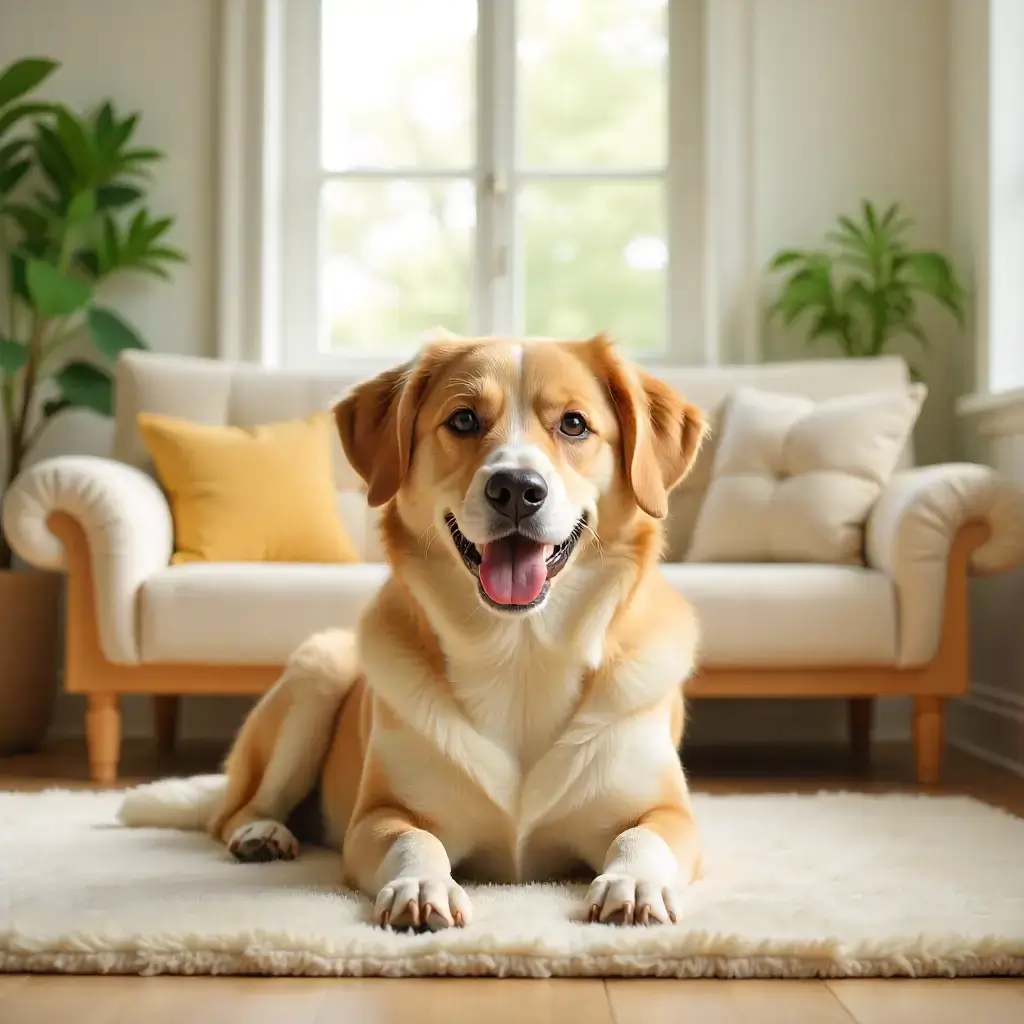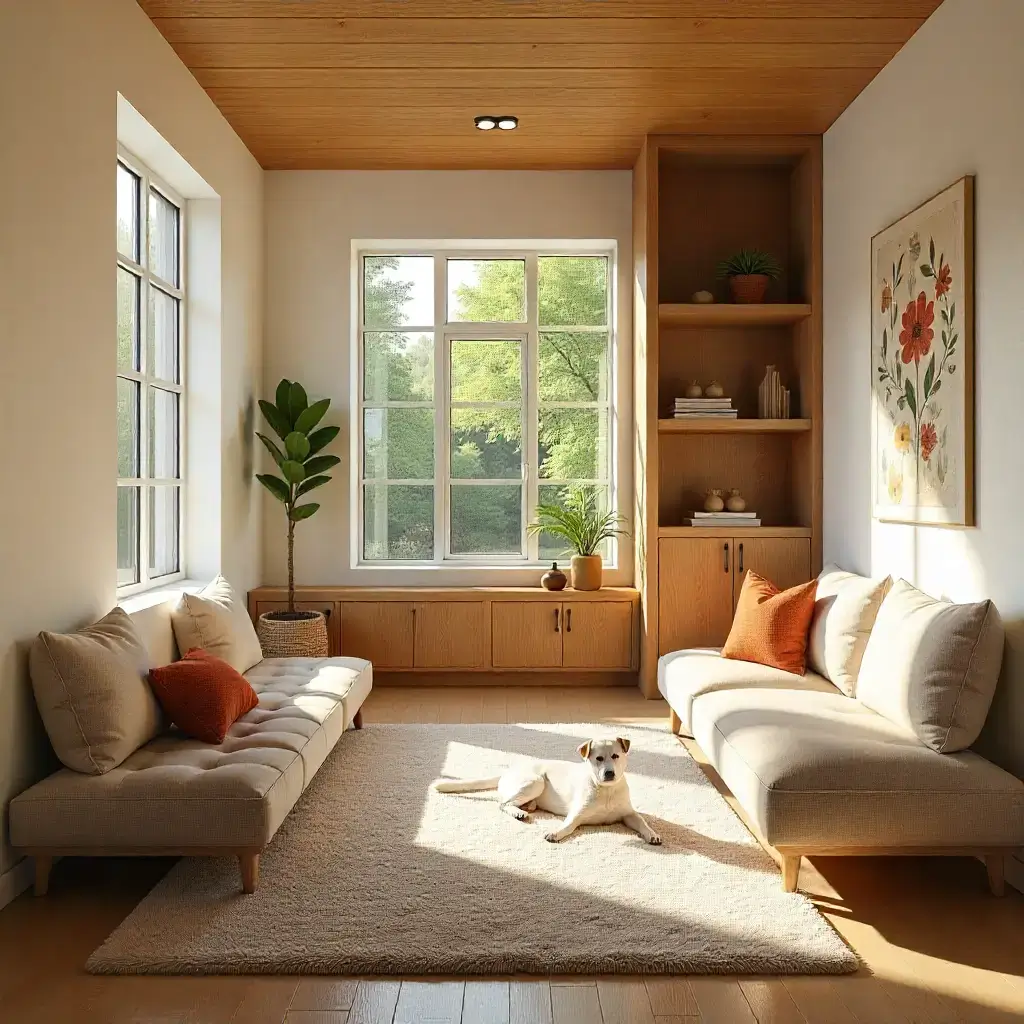Welcoming a dog into your home is one of life’s greatest joys — but it also comes with responsibility. Your home should be a safe, comfortable, and stimulating environment for your pet. Making your house dog-friendly not only improves your dog’s happiness and well-being but also strengthens the bond you share.
This guide will show you how to transform your home into a perfect haven for your canine companion — from choosing the right furniture to organizing play and rest zones.
Why Creating a Dog-Friendly Home Matters
A dog-friendly home supports your dog’s physical and emotional needs. Dogs are curious, social, and sensitive to their environment. A poorly arranged or unsafe space can lead to anxiety, boredom, or even injuries.
Benefits of a Dog-Friendly Home
- Promotes safety and prevents accidents
- Encourages healthy habits and physical activity
- Reduces stress and destructive behavior
- Strengthens trust between you and your dog
Step 1: Create a Safe and Comfortable Space
Designate a Personal Zone for Your Dog
Every dog needs a personal area where they can relax and feel secure.
Tips for Setting Up a Dog Zone
- Choose a quiet corner away from high traffic.
- Use a comfortable dog bed with washable covers.
- Add soft blankets or toys for familiarity.
- Avoid direct drafts or cold flooring.
Keep Your Dog’s Needs in Mind
Different breeds have different comfort requirements. Small breeds may need more warmth, while larger dogs prefer spacious resting areas.
🐾 Related Articles You May Like
- Tips for Bathing Your Dog | dog bathing tip
- How to Host a Dog Adoption Event
- Dog Breeds with Unique Ear Shapes
Step 2: Ensure Your Home Is Safe

Secure Electrical Cords and Outlets
Puppies love to chew — keep cords out of reach or use protective covers.
Avoid Toxic Plants and Substances
Many common houseplants and cleaning products are harmful to dogs.
Dog-Toxic Plants to Avoid
- Aloe Vera
- Pothos
- Lilies
- Philodendron
- Sago Palm
Store Food and Chemicals Properly
Keep all cleaning products, medications, and human food safely locked or stored on high shelves.
Step 3: Choose Dog-Friendly Furniture and Flooring
Flooring
Opt for scratch-resistant and non-slip flooring such as vinyl, tile, or laminate. Avoid carpets that trap fur and odors.
Furniture
- Choose stain-resistant fabrics like microfiber.
- Avoid light-colored upholstery if your dog sheds.
- Use washable covers or throws to protect sofas.
Keep Furniture at Safe Heights
Avoid tall furniture that encourages jumping — especially if your dog is small, senior, or has joint issues.
Step 4: Organize Play and Activity Zones
Indoor Play Area
Set aside a space where your dog can safely play when the weather is bad. Use soft flooring and keep breakable objects away.
Outdoor Space
If you have a yard, make it secure and stimulating.
Dog-Friendly Yard Ideas
- Install fencing to prevent escapes.
- Provide shaded areas for rest.
- Add a small pool for hot days.
- Grow dog-safe plants like lavender and rosemary.
Step 5: Maintain a Healthy Environment
Air Quality and Cleanliness
Vacuum frequently to reduce hair and dander. Use air purifiers to maintain clean air — especially important for allergy-prone owners.
Control Odors Naturally
Use pet-safe odor eliminators or natural options like baking soda and activated charcoal.
Regular Grooming Space
Create a small grooming station for brushing, nail trimming, and ear cleaning.
Step 6: Make Mealtime Convenient and Hygienic
Choose the Right Feeding Spot
Pick a quiet, low-traffic area where your dog can eat peacefully.
Feeding Station Tips
- Use non-slip bowls made of stainless steel.
- Keep fresh water available at all times.
- Clean food and water dishes daily.
Step 7: Consider Mental Stimulation
Dogs need mental as well as physical exercise. A bored dog can become destructive.
Enrichment Ideas
- Puzzle toys and treat-dispensing balls
- Hide-and-seek games
- Interactive play sessions
- Training new tricks
Rotate Toys Regularly
Switch out toys every few days to keep things interesting and reduce boredom.
Step 8: Create a Calming Atmosphere
Sound and Lighting
Dogs are sensitive to noise. Keep a peaceful environment and play soft background music if your dog is anxious.
Use gentle lighting, especially in resting areas, to create a soothing mood.
Avoid Overcrowding
Too many decorations or furniture pieces can make a dog feel trapped. Keep open areas for free movement.
Step 9: Make Traveling and Visitors Stress-Free
For Guests
Train your dog to stay calm when visitors arrive. Provide a designated space where your dog can retreat if they feel overwhelmed.
For Travel
Have a designated spot near the door for your dog’s leash, harness, and travel bag — making outings more organized.
Step 10: Keep Up with Maintenance and Routine
A dog-friendly home needs ongoing care. Regularly check for hazards, deep-clean dog areas, and replace worn-out toys or beds.
Seasonal Adjustments
- In summer: Keep the house cool and ensure water availability.
- In winter: Provide extra blankets and limit exposure to cold floors.
Conclusion
Creating a dog-friendly home is about balance — combining safety, comfort, and joy. When your environment matches your dog’s needs, you create a happier household for both of you.
With the right setup, every corner of your home can become a space of love, play, and relaxation for your furry friend.
📌 Follow Us for More Pet Tips!
Stay updated with the latest dog care guides, natural remedies, and expert advice by following us on Pinterest and Facebook. Join our community of pet lovers today! 🐶❤️

